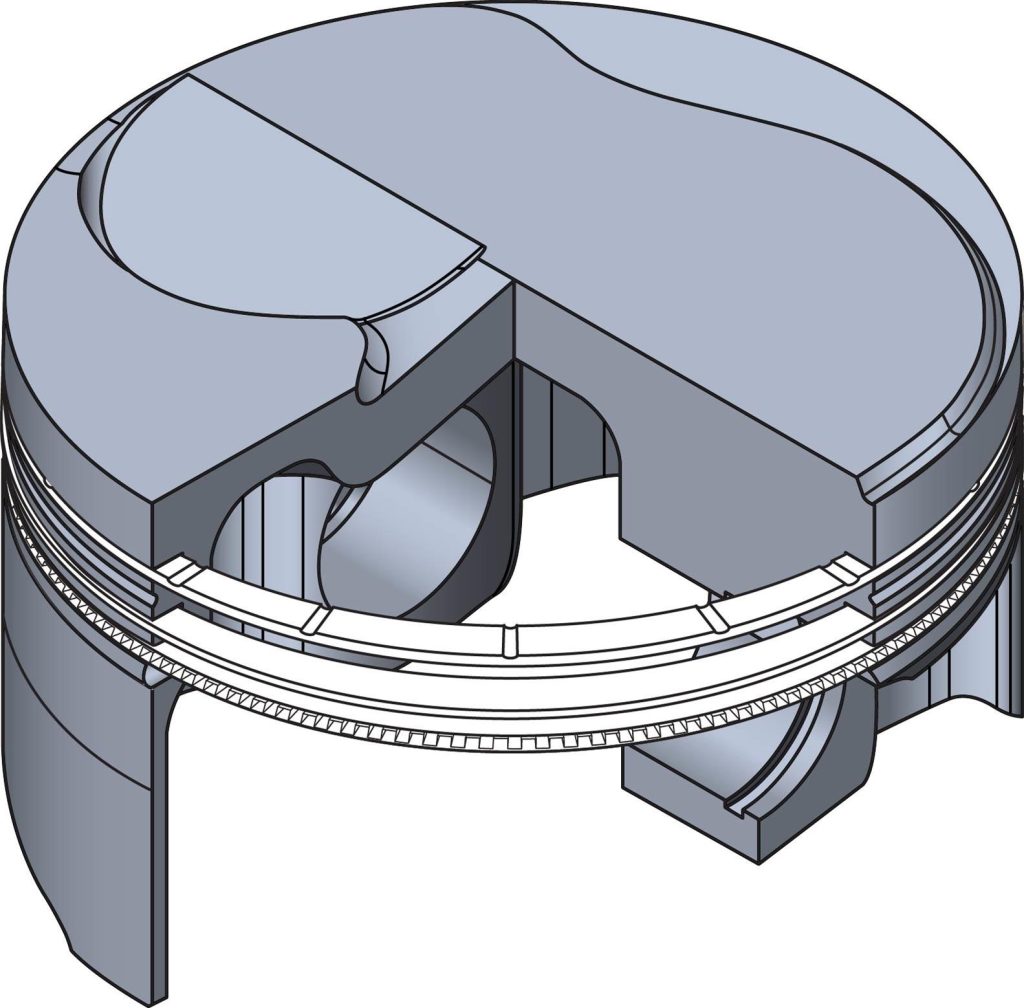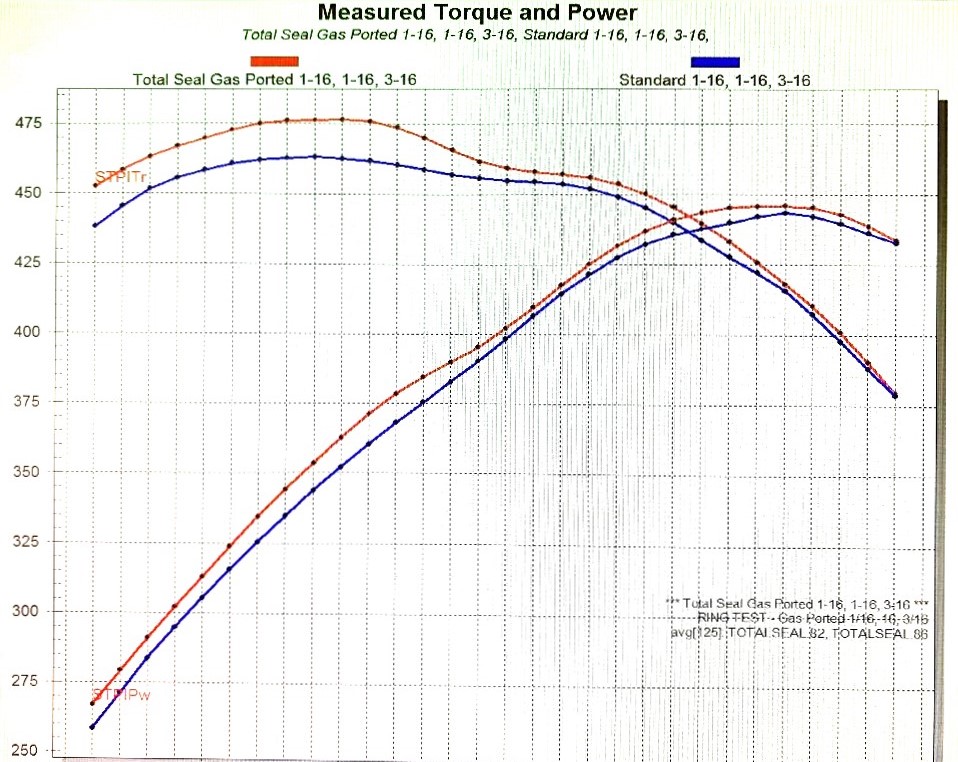For a good but not expensive small block Chevy street engine running normal pump gas compression and with some mild performance upgrades, what would be the best piston rings to choose? I’m running a set of forged pistons but not sure about the rings. There are cast rings, steel, moly, and those really expensive racing rings. Which one is the best? Which would be the best to choose for my engine? Thanks
D.P.
This is a question that has increasing relevance in today’s engine market. Beyond just the material for the rings, you also need to consider several other variables. Since you already have the pistons, the ring thickness question has already been answered since you will need to use the rings designed for the pistons you already have.
The most common thickness for most performance pistons is 1/16 inch for the top and second rings with a 3/16 inch oil ring. However, later model engines like the GM LS has gone to a much thinner ring package using a 1.5mm top, 1.5 mm second, and a 3.0mm oil ring. We’ve included a chart that lists the decimal sizes of these different ring thicknesses so you can see the difference. Thinner rings have been proven to be significantly better since they seal better, produce less friction, and will actually last longer than thicker rings. The big difference is reduced friction.
Piston Ring Thickness Inch/mm to Decimal Comparison Chart
| Thickness (In./mm) | Thickness (Decimal Equivalent) |
|---|---|
| Top & 2nd Ring | |
| 5/64” | 0.0781 |
| 1/16” | 0.0625 |
| 0.0430 | 0.0430 |
| 1.5mm | 0.0585 |
| 1.2mm | 0.0471 |
| 1.0mm | 0.0394 |
| 0.9mm | 0.0354 |
| 0.8mm | 0.0315 |
| 0.7mm | 0.0275 |
| Oil Ring | |
| 3/16” | 0.1875 |
| 1/8″ | 0.1250 |
| 3.0mm | 0.1179 |
| 2.5mm | 0.0982 |
| 2.0mm | 0.0786 |
Comparing Piston Ring Material
As for the materials, each has its own benefits and disadvantages. We’ll focus mainly on the top and second ring, and then address the oil rings separately. The least expensive material is cast iron for the top and second rings. These rings are inexpensive but are brittle and generally don’t offer the greatest ability to seal high cylinder pressures. For the most part, cast iron has been replaced by ductile iron that offers substantial improvement in durability with more than double the tensile strength. We found a set of 4.030 inch 5/64 inch ductile iron Hastings Rings at SummitRacing.com racing for less than $30—and a set of 1.5mm rings for a 5.3L LS truck engine for even less!
The next as you mentioned are the steel rings. These offer significantly more durability and ability to withstand cylinder pressure abuse. The moly coating on the rings was for many years the solution to improve sealing. The molybdenum coating was often metal sprayed on the rings but displayed a tendency to chip or flake off when exposed to detonation, reducing its ability to seal.
A steel ring with a gas nitriding process has recently gained favor with both street and race engine builders. This is a heat treating process that improves the ring’s ability to withstand high cylinder pressures and maintain a decent seal. This process has gained sufficient favor that now many production engines are equipped with gas nitrided top piston rings so that might be a good indication that the results are very much worth the investment.
The next level steel ring offers a coating applied through physical vapor deposition (PVD). This is the process that applies a number of different coating materials such as titanium or zirconium. This is a much more expensive process that is reflected in the price of the rings and will generally be relegated to competition engines or perhaps a high-end street engine. If you combine a really thin ring package with a PVD-applied titanium coating, the cost could easily exceed four figures, but you would have the best of the best.
Gas Ported Piston Rings
One new idea for street and competition engines is Total Seal’s latest venture with what are called lateral gas port top rings. Vertical gas porting is a process where a race engine builder drills a 0.030 inch vertical hole in the piston top to put cylinder pressure behind the top ring to force the ring into the cylinder wall. Several aftermarket piston companies are now drilling horizontal gas ports in the top ring land to help direct cylinder pressure behind the top ring.
Total Seal took this one step further by milling a series of lateral gas ports on the upper horizontal surface of the top ring. This does a similar job to vertical gas porting but does not suffer from the problem of carbon eventually blocking the vertical gas ports as will happen with a street engine. Again these gas ported piston rings are slightly more expensive but do offer some performance advantages.
The second, or oil control ring is also worth investigating. Better ring packages now include what is called a Napier ring. This is a ring with a tapered edge that points downward to do a better job of scraping oil off the cylinder wall that is left behind by the main oil ring. This is actually this ring’s primary job and not as a secondary compression ring as many assume.
***
Recently Summit Racing has worked together with Total Seal to offer what Summit Racing calls its GPX ring package. Offered in a wide variety of thicknesses and bore diameters, the GPX package is a combination of a steel, gas nitrided top ring with horizontal gas ports backed by a ductile iron second ring and finished with a selection of often two different oil ring packages based on a tension number.
You may enjoy this article too: A Closer Look at Summit Racing Pro GPX Gas Ported Piston Rings
As an example, we looked up a GPX ring package for 4.030 inch small block Chevy using 1/16, 1/16, and 3/16 inch rings. The GPX system includes a lateral gas port top ring with a ductile iron second, and a 15 pound tension oil ring package for a very reasonable price of just over $200. We used a set of similar GPX rings in a 5.7L carbureted LS engine we recently built with a mild cam and stock heads that made 430 hp. That’s good power (at 1.24 horsepower per cubic inch) for a 346ci engine with a cam that could still pull 14 inches of manifold vacuum at 850 rpm.
***
So with this short description of all the different piston rings, this should help you make an intelligent decision for your small block engine build.



No mention of the spacers Total Seal offers to enable using thinner rings in larger grooved pistons?
You mean these oil ring spacers?